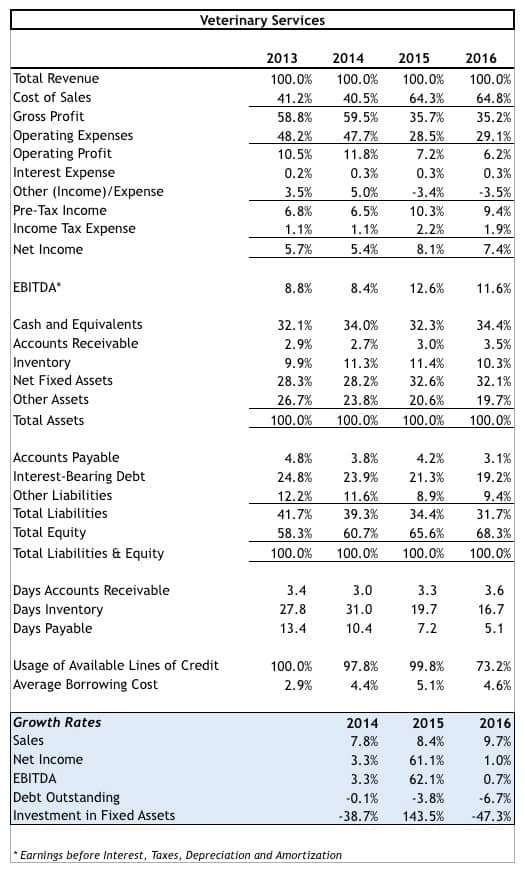Increased Number of Household Pets Gives Veterinary Services Industry Positive Outlook
 The following overview of veterinary industry trends is part of a larger series of industry reports that will be published between August and October 2017 for the benefit of our subscribers. Data and information provided is cited from IBIS World, a global business intelligence leader specializing in Industry Market Research.
The following overview of veterinary industry trends is part of a larger series of industry reports that will be published between August and October 2017 for the benefit of our subscribers. Data and information provided is cited from IBIS World, a global business intelligence leader specializing in Industry Market Research.
In 2016, Meaden & Moore clients in the veterinary services industry experienced an average increase in revenue of 9.7%. The veterinary services industry as a whole has experienced strong positive revenue growth, averaging 3.4% over the last five years, a trend tied closely to unemployment decline. This growth was largely caused by an increase in the number of pets that American households have, and the increasing age of those pets.
Looking forward, the veterinary services industry is expected to grow at an annualized rate of 1.3% over the next five years. Within the sector, profits are expected to rise even more, as practices become more specialized and are able to charge higher margins. Today, many pet owners are willing to pay for treatments that were once reserved for humans, such as complete blood counts and blood pressure screenings These are treatments that help contribute to higher margins.
As the economy continues to recover, household pet ownership is expected to continue to increase over the next five years at an expected rate of 2.2%, which will create more demand for veterinary services. Technological advances over the last few years have also increased the life expectancy of household pets significantly. Older pets require more expensive care, as age-related issues begin to affect them. Many veterinarians now offer wellness programs and provide advanced care, such as cardiology and dermatology, to better service aging pets.
The new trend of buying pet insurance is also beginning to become more popular as disposable income increases. The existence of pet insurance will increase the popularity of expensive procedures. Beginning in 2014, meat consumption in the United States began to rise steadily, causing an increased demand for livestock. The regulations over meat inspections have also become more stringent recently as public awareness over livestock-transmitted diseases increases. As the amount of livestock and regulations increase, the amount of veterinary services also increases in the form of inspectors and veterinarians. At the same time, improved methods for keeping livestock healthy has lowered the risk for livestock diseases, offsetting part of this new benefit. Overall, the industry as a whole has a positive outlook for the coming years as the number of household pets are expected to continue to increase.
Source: IBIS World.
The Following chart "Veterinary Services" is compiled by Meaden & Moore.


Lloyd W.W. Bell III is Director of the Corporate Finance Group at Meaden & Moore. He has over 30 years of experience in financial management.









